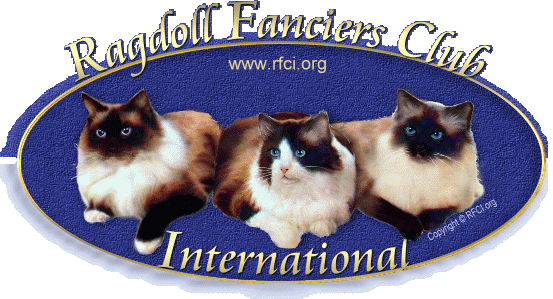A Description of the Ragdoll
The beauty of the RAGDOLL is only one of their many features. Their disposition
and personality are what makes them a truly unique cat. They are quiet, playful,
placid, relaxed and very loving. They make a wonderful house or apartment cat.
Because they adapt well to the indoors. A RAGDOLL should never be left outside
unattended. They can be easily leash trained, however, it is recommended that
they stay in the house at all times, so they don’t get a taste of the
outdoors, and then try to sneak out whenever the doors are opened, especially
with children in the house.
RAGDOLLS are docile, large and affectionate and respond well to children
and other pets. Ragdolls and dogs do especially well together if the dog is
well mannered. Children should be watched around a Ragdoll kitten, but most
Ragdolls raised with children will tolerate being “lugged” around
the house and be happy to be played with.
RAGDOLLS are slow to mature physically obtaining full maturity between 3
and 4 years of age. Altered adult males may reach 15 to 20 pounds; females
will weigh about 5 pounds less.
The Ragdolls fur is rabbit-like, medium long with LITTLE shedding. Remember,
all animals, including humans do shed their fur, so expect some shedding in
the spring and fall. What is nice about the Ragdoll fur is that it is very
easy to pick up. It is so soft that it just sits on top of the surface instead
of working it’s way into fabric and is therefore easy to pick up. Just
a damp hand, or rag will lift most hair off your clothes. The RAGDOLL requires
little or no routine grooming. During shedding season, be sure to watch for
some tangles under the armpits in some Ragdolls. All pointed RAGDOLLS have
beautiful blue eyes.
The only Ragdolls that are accepted in the written Ragdoll standard in all major associations are blue-eyed pointed Ragdolls.
There are a minority of breeders who choose to breed non-pointed, non-blue-eyed experimental colors in their own breeding programs, often advertised as ‚Äúsolid, mink or sepia‚ÄĚ Ragdolls. It is important to note that these experimental (variant) Ragdolls have not been accepted by any major association (and should be registered as non-standard), nor do they comply with the current written Breed Standard that describes the Ragdoll as a blue-eyed, pointed Breed. You will see advertisements as them being ‚Äúrare‚ÄĚ. The reason they are rare is because they are not accepted in the written Ragdoll breed standard and so the majority of breeders will not have them in their breeding programs.
To see color and pattern charts with pictures click here: Colors and Patterns
|

